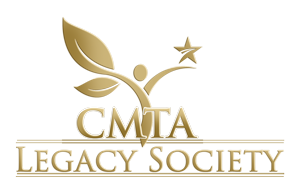
Amy Warfield is a
member of the CMTA
Advisory Board and is a physical therapist at the MedStar National Rehabilitation Hospital in Washington, D.C.
Because CMT affects each person differently, exercise has to be tailored to the specific impairments identified and dosed effectively. As a mobility expert, a physical therapist can provide guidance in finding the optimal program to get a person to the next level.
I was asked to join the Advisory Board because I am a physical therapist, and, most importantly, because my husband and two of our children have CMT. During our experiences with CMT, we have encountered many people, including physicians and patients, who are unclear as to the role physical therapy plays for those affected by CMT. If we are going to help them, we all need to be on the same page.
As a physical therapist, I work with children and adults in a one-on-one setting. A new patient visit starts with a comprehensive evaluation. I discuss the patient’s medical history and assess the current level of function and the neuromusculo-skeletal system. This assessment also includes assessing the client’s balance, sensory system, strength, range of motion and functional skills. I ask about any history of falls or medication changes, and I inquire into the client’s daily living activities, recreation activities and housing situation. I am not asking these questions because I am nosy, but because I am trying to learn the client’s goals and develop an individualized plan of care specific to the situation.
In an ideal world, I would know what type of CMT a patient has—and its natural progression. I would then try to determine which muscles are weak due to a lack of a nerve connection between the nerve and the muscle and which muscles are weak because they aren’t used regularly. Muscles that are weak because they aren’t used enough can be strengthened. Muscles that are weak because the nerve signal doesn’t reach them cannot be strengthened and therefore should not be over-taxed with strengthening attempts. Like all physical therapists, I put thought and consideration into the client’s specific goals, past experiences and physical capabilities when designing a program to address specific impairments.
In the physical therapy clinic where I work, I have helped people with CMT maximize the efficiency of their gait pattern in order to decrease their fatigue at the end of the day. Clients have thanked me for teaching them stretching and exercise routines that have allowed them to return to their previous activity level or to confidently negotiate a hallway at school. Pain management strategies can be taught to improve a client’s quality of life. With improved balance, a client can better handle public transportation systems or the playground. One of my greatest pleasures has been helping children achieve the gross motor milestones they need to participate in their recreational activities and school life.
In a case of practicing what I preach, I have taken my own kids to PT to get an objective assessment and guidance on how to best encourage their gross motor development, strength and balance. Each time the therapist had some amazingly creative ideas (and the advantage of not being Mom) to achieve our goals. Most recently, we sought out the help of a physical therapist, as our son was about to start kindergarten. He still couldn’t ascend stairs with a step-over-step pattern, and I worried this would single him out as it wasn’t a playground skill but rather an everyday skill. I also worried about how he would ever get up the huge school bus steps.
The therapy worked. He gained the strength he needed to negotiate stairs of all sizes and his confidence grew as well. In our home, daily stretching is part of our routine, night splints are worn and range of motion and strength exercises are done daily. We realize the work has to be done in order to achieve our goals, but it isn’t always easy.
In our home, we are challenged by CMT even with a physical therapist and a pediatrician living under the same roof. We are all doing the best we can. When I reach out to another physical therapist, or when you do, you should know the physical therapist that you seek out has trained for years to provide individualized care and guidance for your particular situation. In the absence of specific evidence for a patient’s situation, our education guides us in interpreting the research that exists and in making the best clinical decisions we can.





